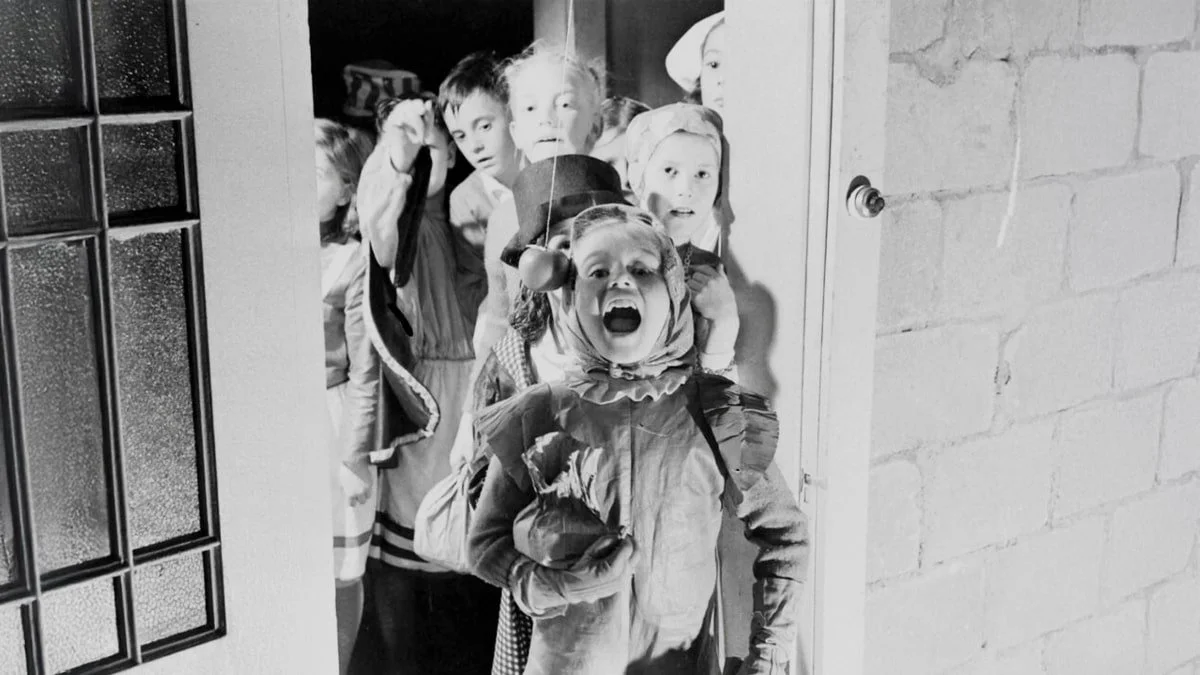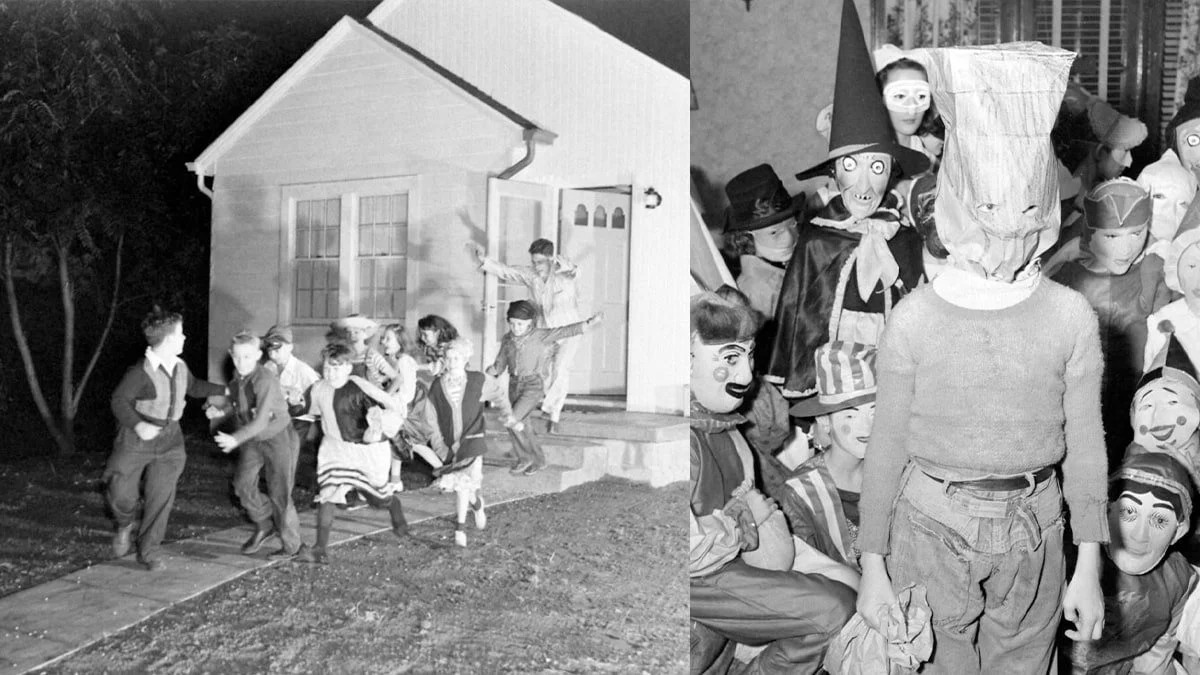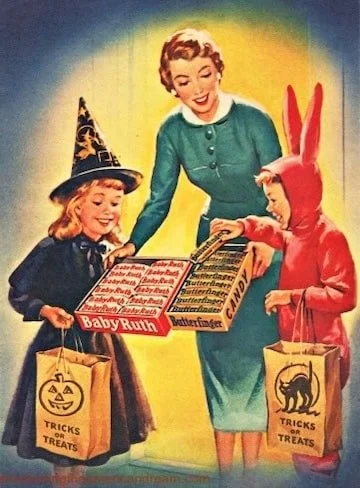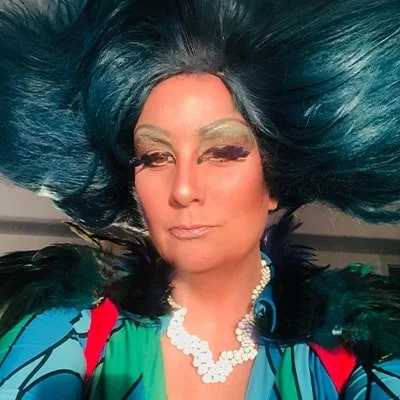Trick or Treat? Inside America’s $7B Consumer Experiment
1941 Halloween. (Photo by William C. Shrout/The LIFE Picture Collection © Meredith Corporation)
Halloween is more than ghouls and ghosts (and sugar rushes). It’s a fascinating study in consumer behavior. Every October, seventy million pounds of candy change hands.
Even as people pull back on spending, 64% of U.S. consumers say they’re buying more “small treats,” fueling a micro-luxury economy. The ritual reveals as much about us as humans as it does about our collective sweet tooth.
Here are a few insights to chew on:
Full-size bars are early lessons in behavioral economics, showing how scarcity and perceived status shape desire and brand affinity.
Trick-or-treating is real-world A/B testing, revealing what people truly value when choices are abundant and unprompted.
“Fun Size” candy is a master class in mass customization, turning portion control into a platform for experimentation — the same logic driving today’s sampling and personalization trends.
Newcastle Collaborator Janet The Planet takes it from here — exploring what this season of small indulgences reveals about the instincts that shape us as consumers.
Something I’ve learned as a career innovator: observe the unfiltered. Watch what people do when they are not prompted. When we pay special attention to rituals that look like play, we see what people truly value.
Nowhere is that truer than Halloween night. Tens of millions of kids fan out across America, pillowcases in hand, conducting what is arguably the country’s longest-running consumer behavior experiment. It’s also a defining holiday for the candy industry — a season that generated over $7.4 billion in U.S. sales in 2024 (National Confectioners Association, Sept 2025).
It’s worth remembering how it started. The late 1930s were hard, Depression-era years — families were broke and kids were restless. Halloween pranks were escalating into the dangerous and illegal. Communities began experimenting with neighborhood parties and ghost-story gatherings to steer kids away from mischief. Then, in 1938, a few Midwest towns had a better idea: go door to door, ask for a “treat,” and skip the tricks.
1941 Halloween. (Photo by William C. Shrout/The LIFE Picture Collection © Meredith Corporation)
Candy makers like the Curtiss Candy Company (the inventors of Baby Ruth and Butterfinger, now part of Ferrero) saw the opportunity instantly. They promoted their wrapped bars as “treats worth knocking for.” By the 1960s, Hershey’s Miniatures and Mars’ “Fun Size” had turned doorstep generosity into full-on brand sampling.
I've had a front-row seat to Halloween candy magic for three decades, starting from a student QC lab job in a bubble gum factory to innovating globally at Nestlé. And every year, I’m reminded Trick-or-treating isn’t just about sugar highs. It’s where generosity, craving, and joy all flow under porch lights. And all these tiny bars reveal surprisingly big truths about each of us.
1. We sort to make sense of chaos.
The first act after any candy haul is instant sorting. Chocolate, here. Chewy, there. Filler, to the side. That’s not greed — it’s the human need for order. When we’re faced with abundance, our brains reach for patterns.
In that moment, eight-year-olds and professional merchandisers speak the same visual language: color, shape, and brand signals that whisper, “I belong here.”
2. We don’t just want candy. We want to be seen.
Remember the one house where you scored that full-sized Snickers? A full-size bar is never just a treat — it’s status. The tiny gasp when you see it in your bag is behavioral economics made visible: scarcity meets prestige. We also attach identity to our candy choices.
What kind of candy person are you? A Nerds person? Sour Patch? Reese’s? — We all fly colors in micro-form. The Halloween kid’s trading table is early training in self-expression through brands, long before anyone learns the term “positioning.”
3. We can fall in love with brands all over again.
Experiencing a brand in a new context means potential for new chemistry. There are online message boards dedicated to how the Reese's Pumpkin has the “perfect” chocolate-to-peanut-butter ratio — a shape-shift that reawakened desire for a familiar classic.
That’s the power of context: move a brand into a new setting, and you change how it’s experienced. Halloween has always been that stage — where nostalgia and novelty meet in one wrapper.
Of course, candy isn’t just a Halloween indulgence — it’s a multi-billion-dollar business built on pleasure, emotion, and memory. There’s a reason I’ve been tapped to help create the Candy Hall of Fame Experience in Chicago: candy is one of the purest emotional connectors we have. It offers control and comfort in small, affordable doses — something people crave even more when budgets tighten and the world feels unpredictable.
Today, even as schools revive classroom parties and towns host community trunk-or-treats, candy remains the beating heart of the holiday — a tiny gift that says, “I see you. I have something sweet to share.”
In moments when people are pulling back on big luxuries, they lean harder into little ones. Candy’s magic lies in that equation: a small joy that restores a sense of agency, belonging, and delight. Halloween is a reminder that even in uncertain times, the smallest pleasures still teach us the most about ourselves.
Janet T. Planet,
Collaborator
Janet T. Planet is Founder of INTERPLANETARY and a Newcastle Collaborator. She’s an innovation and experience design expert whose work has generated billions in new growth across dozens of industries (including candy, of course). View profile.




